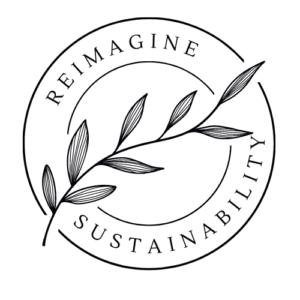You’ve probably stumbled across media articles which predict that the world’s doomsday is getting closer and closer if we don’t reduce our emissions. Cutting emissions is portrayed as the only way to save us. Yes, we want to cut down on those bad emissions (they are bad, like really bad), but do you see yourself working in the space of decarbonisation? Sustainability equals decarbonisation. That’s the endlessly recurring story the general media is preaching. But there is a cure: The Triple Bottom Line.
What if I told you that there is a lot more to sustainability than simply cutting your emissions and developing decarbonisation technology (do not get me wrong, it is a job which needs to be done rather quickly). We have deeper systemic problems than simply the climate crisis. What about the food waste crisis? Housing crisis? Financial crisis? Mental health crisis? Poverty crisis? Biodiversity crisis? Cultural crisis? Cost of living crisis? All those crises derive from a simple problem: system failure.
Related:
From A Carbon Tunnel Vision To A Holistic Collaboration Approach
Increase your sustainable performance with the Triple Bottom Line
Let me make the following remark: You do not have to solve all of the crises by yourself. We are almost eight billion people on our planet. Everyone has the capability to contribute to more sustainable systems.
Where to start? There are a lot of smart and brilliant people who asked themselves this simple but important question. One of those people goes by the name of John Elkington. If you have not heard about him yet, he is the brilliant mind behind the popular strategy of the Triple Bottom Line. As with many sustainability concepts, the Triple Bottom Line has been turned – in the business world – into an accounting term. This was not the intention of Elkington.
Unfortunately, good intentions are prone to be misused
He developed the Triple Bottom Line to rethink capitalism with the goal of system change. Because yes, our systems are covered in flaws which lead to all the different insecurities we have to go through at the moment. Things will become more complicated, as the overarching goal of sustainability is the transformation of capitalism. This sustainable capitalism transition is going to be one of the most complex challenges we will ever have to achieve. In Elkington’s words, we have to embark on a global cultural revolution to save our existential livelihood. If you’re interested in his work, I recommend you to read his first chapter Enter the Triple Bottom Line.

A visualisation of the Triple Bottom Line
Now we’re coming to the easier and less dramatic part of this article: explaining the concept of the Triple Bottom Line. The Triple Bottom Line is a solid basis for sustainability action and performance. Why? Because, in its most simple guise, the Triple Bottom Line is a sustainability framework that looks at the positive, negative and mutual interdependencies of social, environmental and economic impacts.
In other words: the relationships between people, planet and profit. Each of the three dimensions has to be carefully considered in relation to the others to achieve goals like environmental protection, social development and economic development.
Economic development has for too long been the focus of action. In consequence, the other two dimensions have been neglected, thus resulting in all the problems we have now. But if you think about it, without a planet there is no room for people. Without people there is no workforce for profit. Profit cannot exist without people and the planet, but the planet and the people can exist without the profit. This shows the order of importance pretty clearly, but in reality we bet everything we have on profit. This needs to change. We need to take environmental and social outcomes into account and develop the economic dimension beyond profit.
The next paragraphs will go into more detail about the three dimensions to give you a clearer understanding of their capabilities and goals.
Environment – The Planet Dimension
Environment can be defined as the total sum of living and non-living elements on our planet. What distinguishes our planet from all the other ones in the universe is simple: life. Starting with the non-living elements, you can count water, land, sunlight, rocks, and air in the environment list. The living elements include animals, plants, forests, fish, birds, reptiles, and so on. In the business world we speak of resources, which can be finite (non-renewable, it cannot be easily replaced or produced) or infinite (renewable, we will not run out of it) resources. In a healthy system, like an ecosystem, the complex network of different elements help organisms to stay alive. This is why environmental protection is important: to maintain life on earth.
The objective of the Triple Bottom Line for the environmental dimension is to manage ecological impacts through their entire life cycle, from birth or growth to death. In a sustainable system dead matter does not become waste but is fully integrated into the cycle of life. Waste does not exist in the natural world and she is the basis of life, so she knows what she is doing. Waste is a human concept, thus making it our responsibility to create systems without waste to support our environment.
Social – The People Dimension
This dimension is often overlooked when it comes to sustainable practices. I find this interesting as people like to make themselves the centre of attention throughout histories. However, when it comes to the well-being and prosperity of societies, the opposite is the case. For a sustainable world you not only need a healthy planet, you also need healthy people. They have right to pursue whatever they want in a safe manner while not harming others.
A responsible citizen is aware that their decisions can have an impact on a global scale. Globalisation provided us with a luxurious lifestyle, but this luxury is starting to backfire now. This means that we have the responsibility to make informed choices for the benefit of the greater good. It might feel like we are disconnected from the events in this world, but the opposite is the case. Every decision we make can cause prosperity, harm or indifference. The aim of the social dimension of the Triple Bottom Line is to create prosperity and support human (as well as natural) well-being and the opportunity to develop culturally.
The social dimension is an important element because we need people to solve society’s challenges. However, if we do not have the opportunity to support a sustainable transition, then we are in big trouble. Natural resources are important to sustain life on our planet, but there is another important resource: Human capital. Human capital includes knowledge, skills and the experience a person has accumulated. It is a very important resource. We humans have to understand our potential and responsibility as a vital part of our natural and social world.
Economic – The Profit Dimension
The economic dimension in the Triple Bottom Line goes beyond the simple goal of creating profit for a business. Economic sustainability relies on the social and ecological consequences of economic activity. Focusing on only financial profit neglects the role of businesses in a system where they are dependent on the environment and people. Again, without the planet and people, profit cannot exist. Imagine the environment and societies working as tiny gears of a watch, doing all the work to keep the watch going. Then, the economy is the watch case, important, but not needed to keep the environment and society going. What I want to clarify with the watch example is the strong interdependency of the planet and people. The profit dimension needs to change to be equally important to the world.
Globally, a sustainable economy has the capability to produce sustainable products and services while maintaining long-term relations with different stakeholders. In this element of TBL, networks and transparency are increasingly more important in achieving customer satisfaction and value. Economic sustainability takes into account social and environmental profit and gives us the opportunity to meet our basic needs and work towards a fulfilled life. However employment is not the only way to find fulfilment, it may simply be the vehicle to finding fulfilment elsewhere.
How you can make use of the Triple Bottom Line
To develop solutions to solve today’s greatest challenges, it is beneficial to include the Triple Bottom Line framework as a decision-making basis to measure your performance. Achieving sustainability requires an understanding of the environmental, social and economic benefits of your chosen challenge, and building a self-maintaining system around it. Every solution needs to take into account the local and/or global reality. Sometimes, it might be difficult to measure if the outcomes are sustainable enough. It is a trial and error process.
We live in an ever changing world and we will never achieve perfection. Here lies the beauty in the possibility: we will never run out of work. We will always be able to find something that gives us purpose and contribute to the well being of people and the planet. Another challenge to keep in mind is that it is not easy to find the right balance between the three dimensions. What might work at one place in the world will not necessarily work somewhere else. But that is okay, as it reflects the immense diversity of our experience and our planet.
I advise you to think about how you can create a positive impact in your family, community, city, at work, at play etc. Starting small is better than not starting at all. We need those little steps from every single one of you. You can start anywhere, from practising self love, to rescuing animals, to developing an innovation. For example, I started this blog because I felt that sustainability was not well understood and I disliked the popular definitions of Sustainability, as they were too limited for my taste.
I would very much like to hear about the little changes that helped you make more sustainable decisions. We all need a little bit of inspiration sometimes.



Ahaa, its nice discussion on the topic of this article at this place at this weblog, I have read all that, so at
this time me also commenting here.
Thank you 🙂 the triple bottom line is in my top five of Sustainability concepts